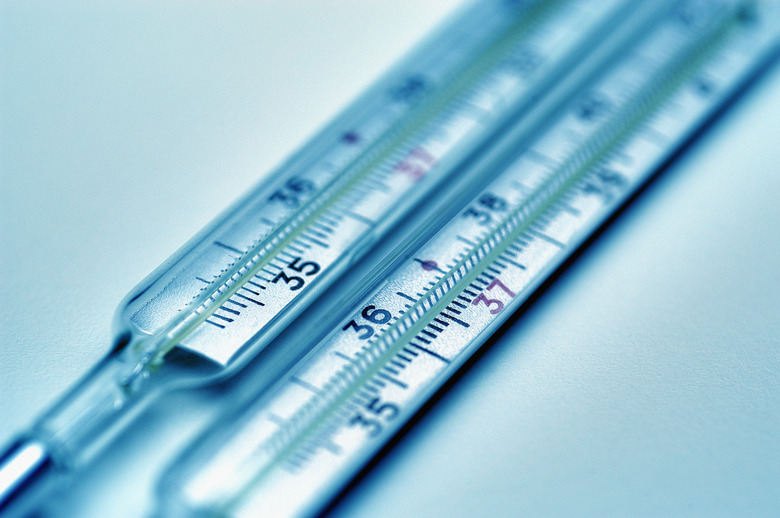Basic Requirements For Growth In Prokaryotes And Eukaryotes
Cells are often called the basic "building blocks" of life, but "functional units" is perhaps a better term. After all, a cell itself contains a number of distinct parts, ones that have to work together to create an environment hospitable to an operational cell.
Moreover, a single cell often is life, as a single cell can and often does constitute a whole, living organism. This is the case with almost all prokaryotes, examples of which are E. coli bacteria and Staphylococcal microbial species.
Bacteria and Archaea are the two _Prokaryotic domains, the unicellular organisms with very simple cells. Eukaryota,_ on the other hand, are usually large and multicellular. This domain includes animals, plants, protists and fungi.
At the cellular level, however, prokaryotic nutrition is not that different from eukaryotic nutrition, at least at the point the nourishment process begins for both.
Cell Basics
Cell Basics
All cells, regardless of their evolutionary history and level of sophistication, have four structures in common: DNA (deoxyribonucleic acid – the genetic material of cells across nature), a plasma (cell) membrane to protect the cell and enclose its contents, ribosomes to make proteins and cytoplasm, the gel-like matrix forming most of the bulk of most cells.
Eukaryotic cells have internal double-membrane-bound structures called organelles that prokaryotic cells lack. The nucleus, which houses the DNA in these cells, has a membrane called a nuclear envelope. Eukaryotes' unique metabolic needs and capabilities have led to **aerobic respiration**, a means by which cells can extract the most energy possible from the six-carbon sugar molecule **glucose.**
Prokaryotic Nutrition
Prokaryotic Nutrition
Prokaryotes do not have all of the growth requirements that eukaryotes do.
For one thing, these organisms cannot grow to large individual sizes. For another, they do not reproduce sexually. For still another, on average, they reproduce many times faster than do even the most rapidly breeding animals. This makes their main "job" not to mate but to simply and literally split, transmitting their DNA to the next generation.
Because of this, prokaryotes are able to "get by," nutritionally speaking, using only **glycolysis**, a series of 10 reactions that occur in the cytoplasm of prokaryotic and eukaryotic cells alike. In prokaryotes, it results in the production of two **ATP (adenosine triphosphate, the "energy currency" of all cells)** and two pyruvate molecules per glucose molecule used.
In eukaryotic cells, glycolysis is merely the gateway to the reactions of aerobic respiration, the final steps of the process of cellular respiration.
Overview of Glycolysis
Overview of Glycolysis
With rare exceptions, cell growth requirements in prokaryotes must be met entirely from the process of glycolysis.
Although glycolysis provides only a modest energy boost (two ATP per glucose molecule) compared to what the reactions of the Krebs cycle and the electron transport chain in the mitochondria can offer (another 34 to 36 ATP combined), this is sufficient to meet the modest needs of prokaryotic cells. Consequently, their nutrition is simple as well.
The first part of glycolysis sees glucose enter a cell, undergo two additions of phosphate, and be arranged into a fructose molecule before this product is finally split into two identical three-carbon molecules, each with it own phosphate group.
This actually requires an investment of two ATP. But after the split, each three-carbon molecule contributes to the synthesis of two ATP, giving a total yield of four ATP for this part of glycolysis and a net yield of two ATP for glycolysis overall.
Prokaryotic Cells: Lab Concepts
Prokaryotic Cells: Lab Concepts
The concept of growth as applied to prokaryotic cells need not refer to the growth of individual cells; it can also refer to the growth of bacterial cell populations, or **colonies.** Bacterial cells often have very short generation (reproductive) times, on the order of hours. Compare this to the 20 to 30 or so years seen between human generations in the modern world.
Bacteria can be cultured on media like agar, which contain glucose and encourage the bacteria to grow. Coulter counters and flow cytometers are instruments used to count bacteria, although microscope counts are also used directly.
Cite This Article
MLA
Beck, Kevin. "Basic Requirements For Growth In Prokaryotes And Eukaryotes" sciencing.com, https://www.sciencing.com/basic-requirements-growth-prokaryotes-eukaryotes-18065/. 17 June 2019.
APA
Beck, Kevin. (2019, June 17). Basic Requirements For Growth In Prokaryotes And Eukaryotes. sciencing.com. Retrieved from https://www.sciencing.com/basic-requirements-growth-prokaryotes-eukaryotes-18065/
Chicago
Beck, Kevin. Basic Requirements For Growth In Prokaryotes And Eukaryotes last modified March 24, 2022. https://www.sciencing.com/basic-requirements-growth-prokaryotes-eukaryotes-18065/
